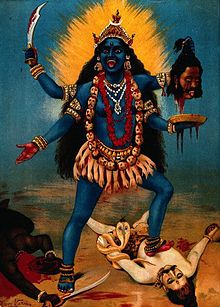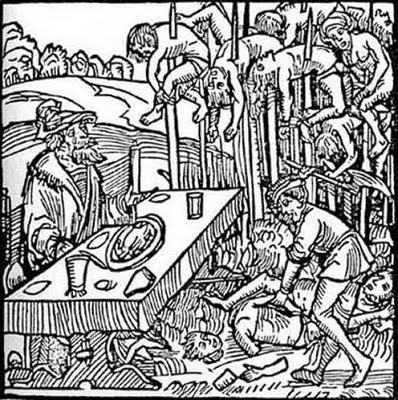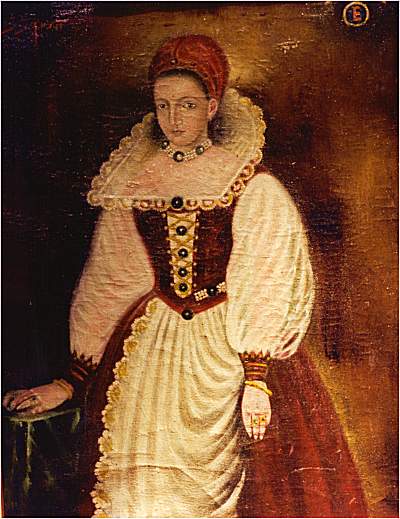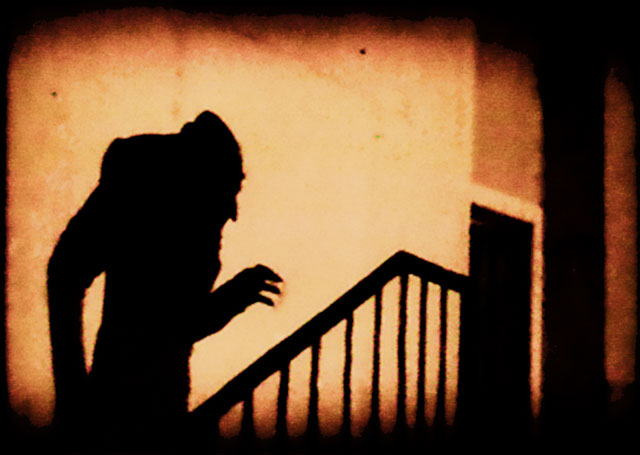Long before Bill and Sookie, Bella and Edward, there was the upyr’, a mythical creature that caused crops to fail, infants to die in their cribs, and plagues to spread throughout the Slavic lands of eastern Europe. How did we go from upyr’ to Vampire: the creature of the night who survives by drinking on blood and sparkles in the sunshine? And, more importantly, what can we learn about medieval Eastern Europe by talking about vampire myths and mythology? Guest Thomas Garza takes us on the trail of vampires from their eleventh century origins to the days of Stoker, Harris, and Meyer, and helps us learn a thing or two about how society copes with its deepest fears along the way.
Guests
 Thomas J. GarzaUniversity Distinguished Teaching Associate Professor in the Department of Slavic and Eurasian Studies and Director of the Texas Language Center at the University of Texas at Austin
Thomas J. GarzaUniversity Distinguished Teaching Associate Professor in the Department of Slavic and Eurasian Studies and Director of the Texas Language Center at the University of Texas at Austin
Hosts
 Christopher RosePostdoctoral Fellow, Institute for Historical Studies, The University of Texas at Austin
Christopher RosePostdoctoral Fellow, Institute for Historical Studies, The University of Texas at Austin
I must to start off with a post-modernist politically correct question: Why is it important to specify that the vampire is Slavic? Can’t we just love all vampires regardless of where they come from?
Because Chris, the vampire is Slavic! My concern always has been that for most western audiences the vampire begins with Bram Stoker in 1897 and his Dracula, and while that was a seminal moment in creating the next step of that great cultural historic myth of the vampire it was far from the first. And if indeed if one takes actually the origin of the word itself, the word we now use, vampire take it back to its vampure, to its upyr‘ beginnings it’s a Russian, Slavic, common Slavic word, from the eleventh century no less.
From the eleventh century, okay.
—First written documentation—
So take us back to the eleventh century. How does this show up? Is it a fairytale? Is it a myth? I am, of course, going on the post-modernist assumption that vampires don’t exist…
Well, as my wife once said in an interview, and I’ve now quoted this repeatedly, when asked, she was asked a question, “So, do you believe in vampires, do vampires exist?” and she replied, “I don’t believe that they necessarily do not exist.”
That’s a wonderful answer to that question.
It’s a terrific answer.
Okay, so eleventh century, in what context does the vampire emerge?
So, the eleventh century marked, 1047 to be exact, is the first written phenomenon of the word ?????—upyr’—in print, in a Russian primary chronicle. So the vampire itself as a phenomenon, as a cultural feature was around centuries before this. And usually, as it was in most other cultures, including eastern cultures, through the Balkans, for Turkey into the Balkans, the story evolves as part of folk mythology of what we want to blame when things go badly wrong. So if a crop fails, the vampire did it. If your child should die in it’s sleep, crib death, the vampire did it. If there’s a plague, it’s vampires. It became the ideal form of cultural othering at a time before, way before we even had that term available to us, to know what it means to scapegoat someone. So the vampire comes in very early on, first as a cultural idea, and the eventually, once it gets into a written form now becomes a historical figure from that point on.

So were there certain groups of people who were identified as what—the term suspected vampires” would be appropriate here. I mean, since you brought in the idea of othering, usually that’s an outside group. My mind goes immediately to the Roma—commonly known as gypsies but the appropriate term is Roma. I’m sure there were others.
The Roma were one of the very, very first, and why is a good story in itself, because the story, the vampire story itself, the vampire mythos, enters into the Slovak world via the Roma people coming from northern India, across Turkey, and then up the Balkan peninsula to what used to be Yugoslavia, the south Slovak lands. The story there becomes one of the Indian goddess Kali. Indeed the first vampire stories were all about women, female vampires, the kind of harpy figure we commonly get, the winged creature with fangs that feeds primarily on men, usually as a story of unrequited love or a story of a jilted past. That story, coming in through the Roma population, then filters it’s way up through the Balkans, central Europe, then finally into Russia where it becomes kind of it’s own thing and men and women both get this moniker of vampire by the time we reach the middle ages.
So how does the mythos evolve, I mean, today vampires have taken on a certain, I hate to say romantic mythos—
Indeed.
—due to certain representations in popular culture—sparkling, vampires do not sparkle, I’m sorry—
Vampires do not sparkle, no.
—or, you know, the gentile southern vampire, or all of these other True Blood, Twilight sort of representations we have, and that’s a far cry from what you’re describing, this creature who caused crops to fail and infants to perish in their cribs. So, how does the story change over time?
So the story, ultimately, having been a blood myth to begin with, Kali is a goddess of a bloodlust basically, that can, may cause death depending on your – this again goes now into a question of karma and all but that’s a whole other lecture. The story, once coming into the Balkans, does indeed then become this story of a life after death story, that is one who becomes a vampire, usually for reasons of heresy, being an infidel of any kind, whether it’s in your personal life to your spouse or to your country, basically gives the sense that the bad means by which you’re living will be paid back for in the next life. And so at death your body becomes now the undead.
Now the cold question of where the drinking of blood comes from and all does come much, much later actually because the word itself, the etymological form vampire, literally means to drink up or to drink out of, but it isn’t specific to blood. It can be, in it’s original form in fact was as we talked about with bad crop failure or infant death, it can be the pulling of energy, the life force out of a person. It ultimately goes back to Ecclesiastes I’m afraid, with “the blood is the life.”
And so when Christianity comes to this region in the ninth century, the Balkan region in the ninth century and the tenth century in Russia, the story now, the life is the blood, the blood is the life now becomes what it is the vampire drinks out in order to sustain his or her own life.
That’s an ancient idea even, that life and blood go hand and hand, I mean you know the Roman emperors, the Maya kings, the ancient Egyptian pharaohs, in order to – Any sacrifice all had to involve blood and life force. You had to give your life force in order for the gods to give you something back.
Absolutely.
So it is sort of a primeval thing. When does this fear aspect, of the idea that these are creatures lurking in the night, is that coming in here? Does it come in later?
I think we are talking about exactly this time, around the medieval period. So the two historical figures that give historical credence to this myth of the vampire, the idea that okay, you may have done something bad in your life, you’re now going to come back as a vampire, you do get eternal life but only in this undead state, and in order to sustain your life you must take the lives of others to do that. So it is not as you say this glamorous afterlife that we now look at in True Blood and in Twilight.

However, what really gives us as I say historical credence to the myth is fifteenth and sixteenth century historical figures Vlad Dracula, the real life emperor of, ruler of Transylvania, Wallachia more specifically, and a successor a hundred years later, Elizabeth Báthory of Hungary, both of whom demonstrated in their lives very strong ruling capacity, that is they were good military leaders, they were strong ruling figures, but they both had the strange lightly called bloodlust. Vlad the Impaler Dracula had a pension for taking his, the Muslim Turk enemy coming into the land of the Slavs and putting them onto wooden stakes, impaling them to frighten off others. This tactic seemed indeed to have worked because that part of Romania, Transylvania, never was occupied by the Turks during the invasions of the fourteenth, fifteenth centuries.
Elizabeth Báthory of Hungary, same thing. Her particular bent was the discovery that human blood, especially from these young girl servants that she had would make her skin remain soft, supple and apparently young. And she took on the habit of draining the blood from these young girls and then bathing in it to stay young looking. So these two stories in particular, as I said truly late medieval period, now give a historical credence to the fact that these are indeed evil entities and the word vampire was attributed to both of them. To both Vlad Dracula – obviously this is where Bram Stoker ultimately will get his idea for the name of his character – and Elizabeth Báthory, the female vampire.
So, we have these two historical figures. Were their legacies necessarily recognized at the time or were they just inspirations later? I know, for example, Vlad ?epe? the Impaler was allegedly the inspiration for Dracula, possibly in name but it was definitely Bram Stoker had in mind. Was this something that was carried around locally or did he do some research on this an pull a story out of somewhere and invent this in the nineteenth century?
Stoker famously researches the idea of this Creature, let’s call it, the character figure that is going to be, that’s to represent the late nineteenth century British context. Think of this in terms of 1890s London area, lots of new immigrants coming into the city and indeed often being, purposefully or not, being blamed for whatever ills were coming into Britain at the same time and wants to create this object of evil that would be his own symbol for the other. And he plays around with a number of variants. Would it be it a Jewish-looking or a Jewish character? Would it be simply a foreigner who comes into England? And ultimately winds up in the British Library looking through travel logs of people from the same period to try to determine what area he might have this creature come from, and comes across travel logs from British travelers through the area of the Balkans, and indeed comes on the story of Vlad ?epe? Dracula.
First of all, he loves the name. He’d been toying with several other names for the creature and likes the name Dracula. Still in the notes in his own writing, “Dracula. This is it.” He underlines it twice to say I’ve found it. But he also likes the idea of the region and hooks on to it that Dracula should be this Eastern European other that comes in and he will speak with the accent, he will look the part. Indeed he makes him into a kind of caricature almost of what an East European Jew would look like. The description of Dracula in the text will talk about the aquiline nose, will talk about the features of the high forehead and so forth. He really wants to convey upon the reader “this is not one of us people, this is someone else” in creating that character.
Now, more specific to your question though I think is, that’s Bram Stoker’s take on why that historical figure becomes his reimagined version of the vampire in 1897. The actual character, interestingly, becomes a kind of Robin Hood character in Romania to present day. You’ll get Vlad Draculus was the Christian crusader of Romania. And sure, we’re talking about fifteenth century, but none the less, present day Romania remains a Christian nation because of, even through communism, because of the things Dracula did, be they immoral, illegal—
He did what he had to do.
He did what he had to do, and look at who we are today.

Interesting. So I have to ask if Elizabeth managed to hold on to her reputation as well…
She does not. In Hungary unfortunately she is fairly routinely and roundly trashed both in the popular literature and in the scholarly literature as being a good leader, but only because her husband Ferenc had been such a good leader for her, that she learned all her military prowess for him. And because what she did was so, probably because she was a woman, was so unthinkable it gave a bad, entire bad reputation to the throne in general. So she’s largely regarded as a blip of history that they would rather forget.
Well since you’ve hit on this point I just have to ask out of curiosity. In pre-modern societies, the demonizing or the erasing of a strong female leader is relatively well known. Do we know for certain that she actually did these things? Or is there some possibility that this was something contributed to her after her demise?
I’ll allow for there is always a possibility. The good news here for historical purposes is that wonderfully specific records were kept during this time. That hundred years difference between Vlad Dracula and Elizabeth Báthory really makes a difference in terms of the historical record. So what were the records kept? A number of the court documents during her trial were kept which had testimony to present day which we have in late medieval Hungarian but nonetheless still intact. We can get the testimony of some of the young women who had gone to the castle who had managed to get away and live to be able to tell their story.
The other incredible document is that of her manservant. Elizabeth had a confidant who was with her all the time and would have been witness to everything. Now the question would be always what was his sake in telling the true story of Báthory. So his diaries, his journals are incredibly detailed in what she did, what she said to whom and what time, numbers and so forth. So much of what we report now as the truth about Elizabeth Báthory is actually her manservant’s journals. So you raise that question of reasonable doubt. Is there a possibility? Of course. He may have wanted it in for her. Again, a man servant to a woman leader, he certainly would have it in him perhaps to be able to say things or write things down that would defame her later.
The vampire starts as a sort of scapegoat for natural forces, sort of a cultural construct to explain the unknowable and we’ve sort of morphed through this period in which there are two historical figures who sort of for better or for worse get attributed to this sort of thing. What is the, if you’ll pardon the pun, the afterlife of vampire mythos in Eastern Europe?
The good news here is that the vampire story has indeed taken on a life of it’s own, and not to be too punful about it all, largely I think because of Bram Stoker. So once the story of Dracula is put out as an Eastern European story, albeit set in London or I should say in England, it’s actually mostly in Whitby that the action takes place, but that it is an East European character there is sort of a renewal in the beginning of the twentieth century, an interest in this character both in Eastern Europe and in Russia proper. New stories begin to appear, actually I should say new versions of old stories begin to appear.

As we enter into the late nineteenth century Russian period as well as in the Balkans you’ll see the great writers, writers like Tolstoy, this is the cousin of Leo Tolstoy, this is Aleksei Tolstoy. Writers like Targeniev, fathers and son fame, even early on Pushkin, all writing stories about vampires in a literary form, in a literary context, not a folklore but a real literary context instead. So the story gets it’s life back in the nineteenth century and it continues through the twentieth century with vigor, even through the period of communism and the soviet period there is still a number of directors who do films about vampires and writers who write stories about them, including Bulgakov, one of my favorite writers in the Stalin period in the 1930s.
What was the reaction of the church to these stories? Especially to leaders like Vlad who is now held up as a pillar of Christianity.
The relationship between the church and this myth is-
Complicated?
Complicated. And fascinating. It’s actually the lynch pin for the course that I teach on this subject. It actually is the relationship between religion, especially Christianity although the story itself has affinities in Islam and certainly in Judaism where the vampire figure, probably the very first vampiric figure, Lilith, the first wife of Adam appears. But what exactly, how exactly do these two come together in the Slavic world again? So you’ve got history of paganism, you’ve got a history of kind of long centuries old tradition of the folk story of the vampire, and suddenly in the you know, late ninth early tenth century we get Christianity being laid thickly over the Balkans, being laid on top of new Russia. Having chosen Christianity, Vladimir the Czar at the time choosing purposefully Christianity over Judaism and over Islam, trying now to come to terms with the new tenants of Christianity against the backdrop of all these very deeply ingrained pagan beliefs.
So now think about it, as I beg my class to do. What does vampirism involve? Resurrection from the dead, the drinking of blood, sometimes the eating of body, in order to pass on that new life. And suddenly students start to see, sometimes it’s a sparkle sometimes it’s a look of disdain, but they come to the conclusion: some basic tenants of the story are strangely characteristic. This kind of Christ as vampire symbol, as vampirism being explained through Christianity, and indeed what went on for several hundred years we do know and to some extent to present day this dualism, duality of religions, a kind of peaceful coexistence of paganism with Christianity laid on top of it is really what ruled Russia for so many centuries.
I always ask my students to think about things like Easter celebrations in this country even in the west and the US. Christians do of course see it as a period of the rebirth of Christ, they go to church they see the crucifix, but they also put out Easter eggs and there’s an Easter bunny and there’s all the little pagan trappings of rebirth and renewal and the spring, the whole vernal equinox celebration. This same kind of duality occurs in the Slavic lands as well. It occurred very heavily for that period from about the eleventh century until about the sixteenth, seventeenth century when then the Christian stories start to really take precedence over the folklore stories. But nonetheless you can see how the two would in a sense compliment each other very nicely.
What changes in that period, the sixteenth, seventeenth century? Advent of printing, increase in literacy?
It’s very interesting because the age of reason sweeping across Europe in the seventeenth century, and by the eighteenth century really taking hold in the west in western Europe, really does give, in a sense, rational reasons for so many of the things that people thought were simply going bump in the night. So tuberculosis now has a cause. The black plague has a cause. We now know what that is. We know why crops fail. We more or less have understood now why sudden infant death is occurring. There is now more science, more historical overview of events that people can explain things away.
Nonetheless this particular period, late sixteenth century, sorry, late seventeenth early eighteenth century, is known as the period of the vampire epidemic throughout Europe. It seemed that the more religion kept telling us there’s a reason for all of this to happen—that you’re not seeing vampires, you’re not seeing werewolves, these are real events with real explanations that happen to them—the more people wanted to come up with reasons to keep the vampire—no pun intended again—to keep the vampire alive.
So during the same period as the age of reason happens we also have a tuberculosis outbreak, a pandemic of tuberculosis, there’s one of cholera as well in the southern regions of the Balkans. What are the physical attributes that go on here? Coughing up of blood, a look of pallor, it is passed from one person onto another …
It appears, yes, that vampires are still among us.